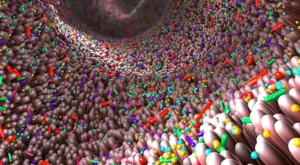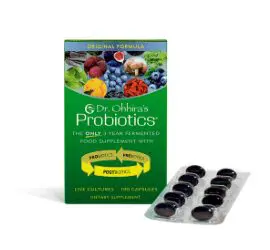By Ross Pelton, RPh, PhD, CCN
Scientific Director, Essential Formulas
Glutathione is the most prevalent antioxidant in the body and a key regulator of detoxification. The liver is the primary organ for detoxification, and consequently, the highest levels of glutathione in the body are found in the liver. The purpose of this article is to explain how ingestion of the popular pain-relieving medication acetaminophen depletes glutathione levels in the liver, which can cause liver damage and result in death.
Every year, thousands of people (children and adults) are injured, and hundreds die from taking too much of the easy-to-obtain OTC medication used to reduce pain named acetaminophen (initially marketed in 1959 under the brand name Tylenol®). Acetaminophen undergoes detoxification in the liver. Most people don’t realize that this process rapidly depletes glutathione in the liver, resulting in liver damage and can cause death.
Acetaminophen is classified as a non-prescription analgesic, and its primary uses are for the relief of pain and to reduce fever. More than 600 drugs contain acetaminophen, which makes acetaminophen the most commonly consumed drug ingredient in America. Acetaminophen is also an ingredient in many widely prescribed prescription pain medications.
How Dangerous is Acetaminophen?
Acetaminophen is generally safe when taken at the recommended dosage levels. However, acetaminophen overdose is the leading cause for calls to Poison Control Centers (over 100,000/year). It accounts for more than 56,000 emergency room visits, 2,600 hospitalizations, and an estimated 500 deaths per year due to acute liver failure.i Also, it has been reported that acetaminophen poisoning is involved in nearly 50% of patients in the U.S. with acute liver failure.ii
Suicide Attempts
Acetaminophen is the most common drug used in intentional overdoses for attempted suicide in the United States.iii According to the CDC, the rate of suicide among teens between the ages of 10 to 24 increased nearly 60% between 2007 and 2018.iv Unfortunately, because acetaminophen is inexpensive and easy to purchase, it has become the most frequently chosen drug for attempted suicide among adolescents.v
Liver Transplants & Acute Liver Failure
Acetaminophen toxicity has replaced viral hepatitis as the most common cause of acute liver failure in the United States and is the second most common cause of liver transplants in the United States. Acetaminophen toxicity is also common in children, although adults account for most severe and fatal cases.vi
The importance of Glutathione
Over 100,000 scientific studies have been published regarding the biological effects of glutathione. It is a critical regulator of antioxidant activity, detoxification, and immune function. Consequently, glutathione regulates the health of every cell in the body.
Low glutathione levels are associated with virtually all chronic lifestyle-related diseases.vii,viii Conversely, studies in numerous species of animals have shown that boosting glutathione levels results in better health and increased longevity, and analyses in humans indicate that higher glutathione levels are associated with better health and increased longevity. For example, glutathione levels in centenarians are similar to the levels of young adults.ix
Glutathione’s importance to health is so definitive. It has resulted in the proposal of the ‘Glutathione Deficiency Hypothesis,’ which suggests that glutathione deficiency is a primary cause of biological aging.x Consequently, glutathione levels are now recognized as a reliable biomarker of aging.xi
Because glutathione is so critical to the health of every cell in the body, taking drugs that contain acetaminophen and the resulting depletion of glutathione can cause serious health problems for people of all ages. Medicines that contain acetaminophen are reviewed in the following section.
ACETAMINOPHEN-CONTAINING DRUGS
Infant Pain Relievers
Concentrated acetaminophen-containing drops and/or liquid are commonly used to ease the pain and discomfort associated with teething, which generally begins when infants are about six months old. Discomfort for each tooth can be from 2 to 7 days, and teething is an ongoing process that can take from 6 to 24 months. Thus, some infants are being dosed with acetaminophen multiple times daily as parents give their children drops or rub the liquid directly onto their gums to alleviate teething discomfort.
Children’s Pain & Fever Relief
According to a consumer healthcare report, Tylenol® is the #1 pediatrician recommended brand to relieve pain and fever in children.xii These products and their generic equivalents are available in chewable tablets and liquid suspension.
Adult OTC Medications
In addition to OTC acetaminophen-containing pain medications, there are several other classes of OTC medications that contain acetaminophen, such as:
- Headache medicines such as Excedrin and Anacin contain acetaminophen as the main active ingredient.
- Cold and flu treatments combine acetaminophen with decongestants, antihistamines, and/or cough suppressants. Examples are DayQuil, Alka-Seltzer Plus Cold and Sinus, Robitussin Cold, Cough and Flu, Sudafed PE Cold and Cough and Triaminic Cold and Fever.
- Meds for premenstrual relief from headaches and muscle cramps such as Pamprin, Premesyn PMS, and Midol PMS.
- Nighttime formulas. Acetaminophen is not a sedative, but it is often combined with drugs that do promote sleep. Examples are NyQuil and Excedrin PM.
Prescription Pain Relievers.
- Hydrocodone/acetaminophen (Brand names Vicodin, Norco, Lortab, Lorcet & others; available as tablets, solution, and elixir). According to a recent survey, hydrocodone with acetaminophen was the 10th prescribed class of drugs in the United States and the most commonly prescribed pain medication in America.xiii
- Oxycodone with acetaminophen (Brand names Percocet, Tylox, Roxicet, Endocet & others; available as tablets and oral solution. Oxycodone is an even more potent painkiller than hydrocodone, and its chronic use or misuse contributes to the current opioid epidemic.
Other Factors That Deplete Glutathione
Processed foods and nutrient-deficient diets can contribute to glutathione depletion. Also, many environmental toxins such as lead and mercury, agricultural pesticides and herbicides, dioxin, and PCBs. Smoking causes a great deal of oxidative stress which depletes glutathione.
How To Protect Yourself
Products under the brand name Reg’Activ® contain a unique strain of probiotic bacteria named Lactobacillus fermentum ME-3 that synthesizes glutathione. Studies have shown that taking Lactobacillus fermentum ME-3 daily is a very effective way to boost glutathione levels. In human clinical trials, individuals ingesting ME-3 for two weeks gained a remarkable 49% increase in the ratio between reduced to oxidized glutathione.xv
Boosting glutathione levels by regularly taking one of the Reg’Activ formulations is one of the most important proactive steps people can make to enhance their health. In addition to supporting liver detoxification, boosting glutathione levels will also provide additional antioxidant protection, increase protection against viruses and toxins from mold exposure and give general support to the immune system.
i Remien CH, et al. Mathematical modeling of liver injury and dysfunction after acetaminophen overdose: Early discrimination between survival and death. Hepatology. 2012 Aug;56(2):727-34.
ii Lee WM. Acetaminophen and the U.S. acute liver failure study group: Lowering the risks of hepatic failure. Hepatology. 2004 Jul;40(1):6-9.
iii Thusius NJ, et al. Intentional or Inadvertent Acetaminophen Overdose-How Lethal It Is? Psychosomatics. Nov-Dec 2019;60(6):574-581.
iv Curtin SC. State Suicide Rates Among Adolescents and Young Adults Aged 10-24: United States, 2000-2018. National Vital Statistics Reports. 2020;69(11). https://www.cdc.gov/nchs/data/nvsr/nvsr69/NVSR-69-11-508.pdfv Le Vaillant J, et al. A prospective study on suicide attempts by self-poisoning in adolescents: Symptoms and complications. Arch Pediat. 2016 May;23(5):461-7.
vi Penna A, et al. Paracetamol poisoning in children and hepatotoxicity. Br J Clin Pharmacol. 1991 Aug;32(2):143-49.
vii Minich D and Brown B. A Review of Dietary (Phyto)Nutrients for Glutathione Support. Nutrients. 2019 Sep;11(9):2073.
viii Lang C, et al. Low blood glutathione levels in healthy aging adults. J Lab Clin Med. 1992 Nov;120(5):720-5.
ix Alonso-Fernandez P, et al. Neutrophils of centenarians shown function levels similar to those of young adults. J Am Geriatr Soc. 2008 Dec;56(12):2244-51.
x Richie JP, et al. Correction of a glutathione deficiency in the aging mosquito increases its longevity. Proc Soc Exp Biol Med. 1987 Jan;184(1):113-117.
xi Julius M. et al. Glutathione and morbidity in a community-based sample of elderly. J Clin Epidemiol. 1994 Sept;47(9):1021-26.
xii Data on file. Johnson & Johnson Consumer Inc., McNeil Consumer Healthcare Division. 2016.
xiii GoodRx Survey of Top 10 Prescription Drugs in the U.S. August 2020. https://www.goodrx.com/drug-guidexiv Guerri C, et al. Changes in glutathione in acute and chronic alcohol intoxication. Pharmacology Biochemistry and Behavior. 1980;13(1):53-61.
xv Mikelsaar M, Zilmer M., Lactobacillus fermentum ME-3 – an antimicrobial and antioxidative probiotic. Microb Ecol Health Dis. 2009 Apr; 21(1): 1–27.




